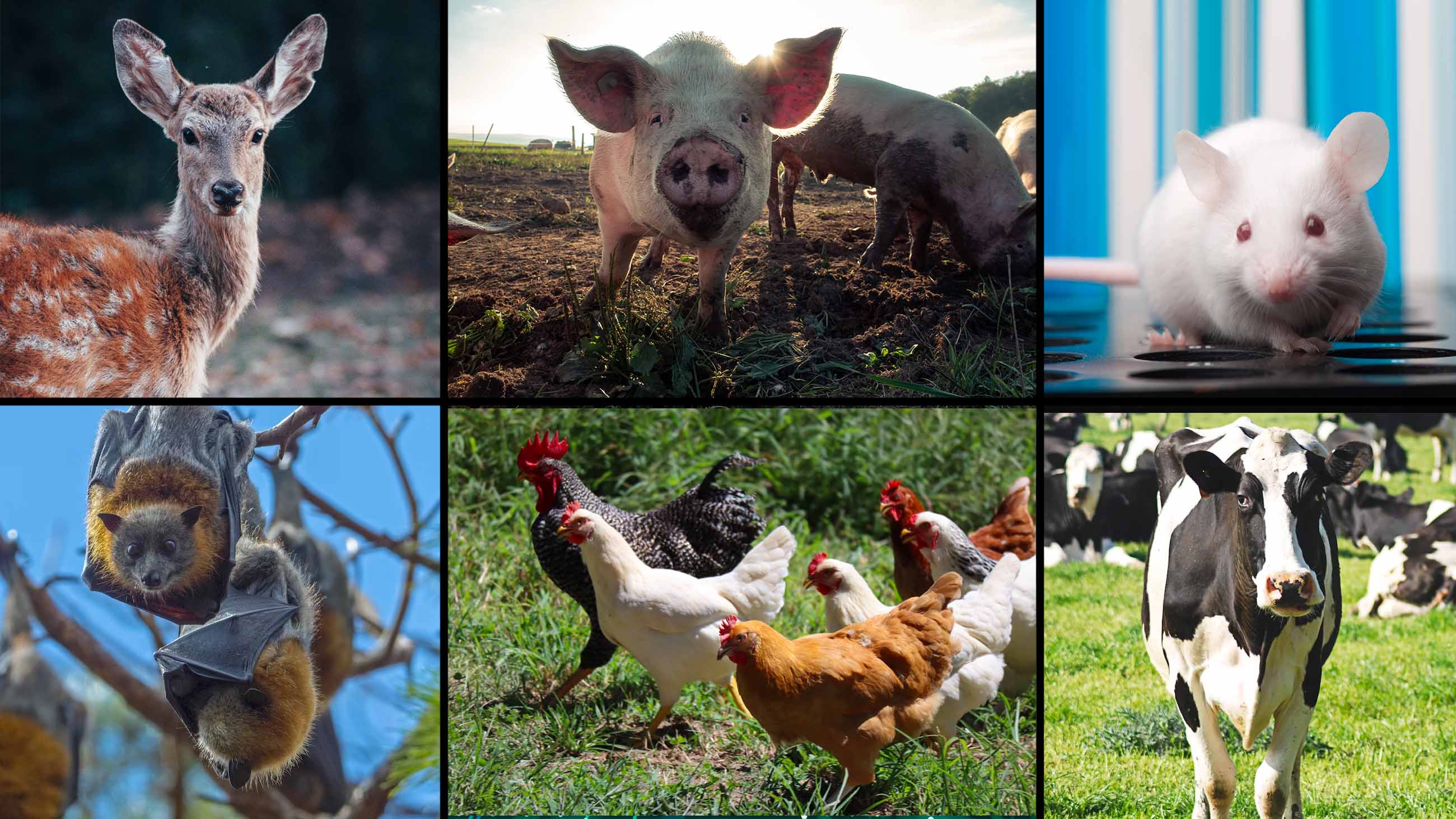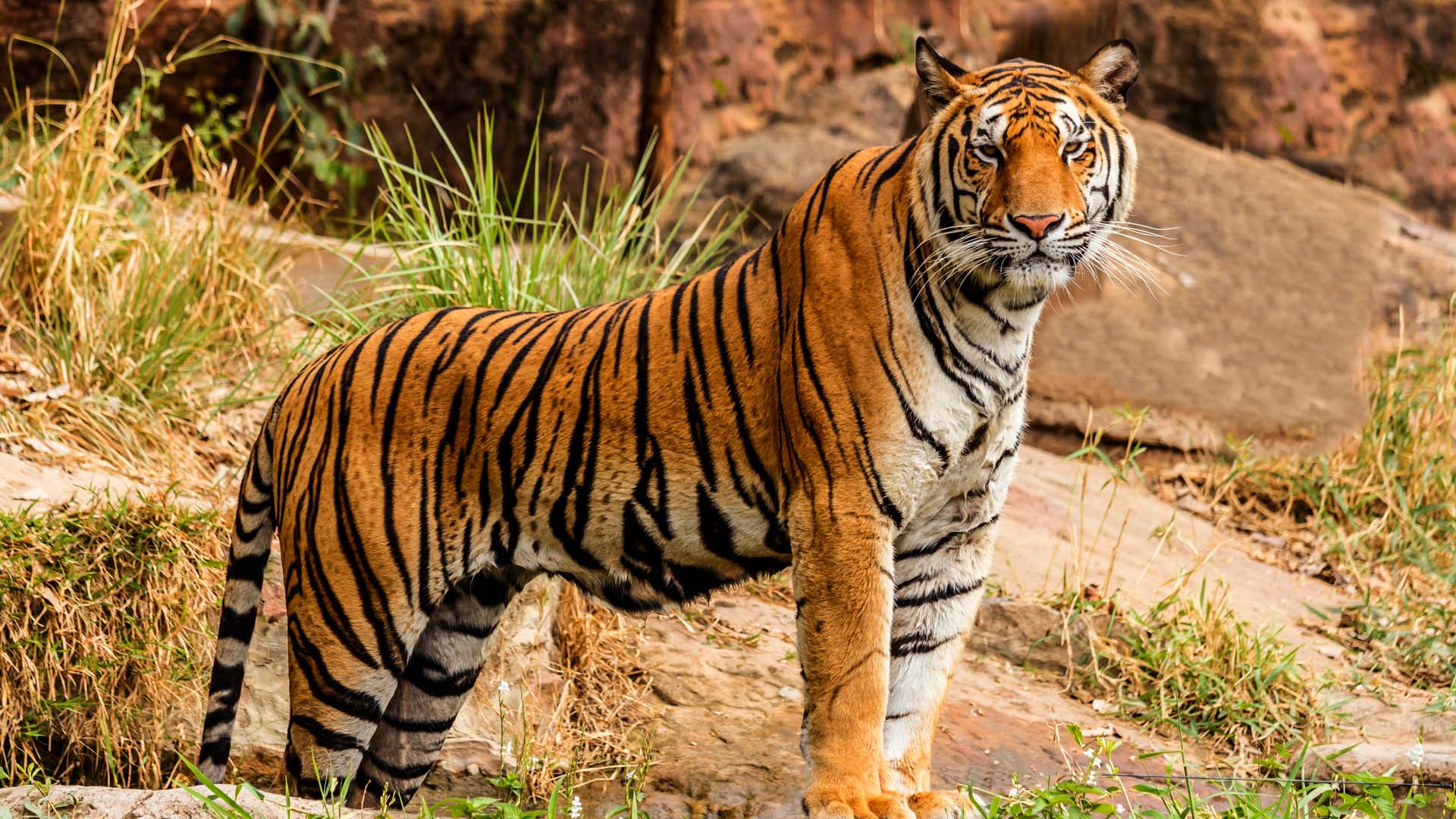To Study Pandemics: Many Critters, a Bit of AI, and Some Openness
At the start of the Covid-19 pandemic, while most Americans were still going out to dinner and living normal lives, a Chinese scientist sent an urgent request to the higher-ups at Jackson Laboratory in Bar Harbor, Maine. The researcher was in lockdown due to the spread of the new pneumonia-like disease, and he wanted to know if the U.S. facility — a hub for mouse breeding and research — had a lab mouse that could contract the illness.
For decades, scientists have studied non-human animals to better understand infectious diseases. These species have been used to test vaccines and treatments, and more recently, scientists have been studying these creatures for clues about whether any of their viruses could infect humans — a process known as a spillover. And it turned out that Jackson Lab did have the ability to spin up a line of genetically modified mice that could replicate some of the aspects of a Covid-19 infection in humans.
To date, the facility has shipped more than 147,000 of these animals around the world, where they have been used to test vaccine candidates and Covid-19 treatments.
For all its utility in this pandemic, though, researchers know the mouse remains an imperfect and, by itself, inadequate tool for preparing for the next. A menagerie of other creatures are routinely recruited in the field and brought into laboratories in an ever-accelerating effort to understand, and possibly head off, the next contagion. Some of them, such as white-tailed deer, represent safe harbors for diseases that infect humans, such as Covid-19 and Lyme. Others, including the chickens, cows and pigs that are raised as food, also supply viruses, which they pass between themselves and spread to other animals — including humans. And then, there are bats — another known nexus for spillover events, and one that remains a hotly debated subject in the hunt for answers to Covid’s origins.
None of this is easy, and the infrastructure needed for systematically studying and archiving data on these varied species is often far more complicated — and pricey — than it is for the ubiquitous mouse. But it’s worth the price, virologists and disease experts say, as are modern efforts to combine this ark of organisms with predictive, AI-driven computer models to help narrow the search for possible crossover points. Together, and alongside the mouse, this represents the vanguard of pandemic research.
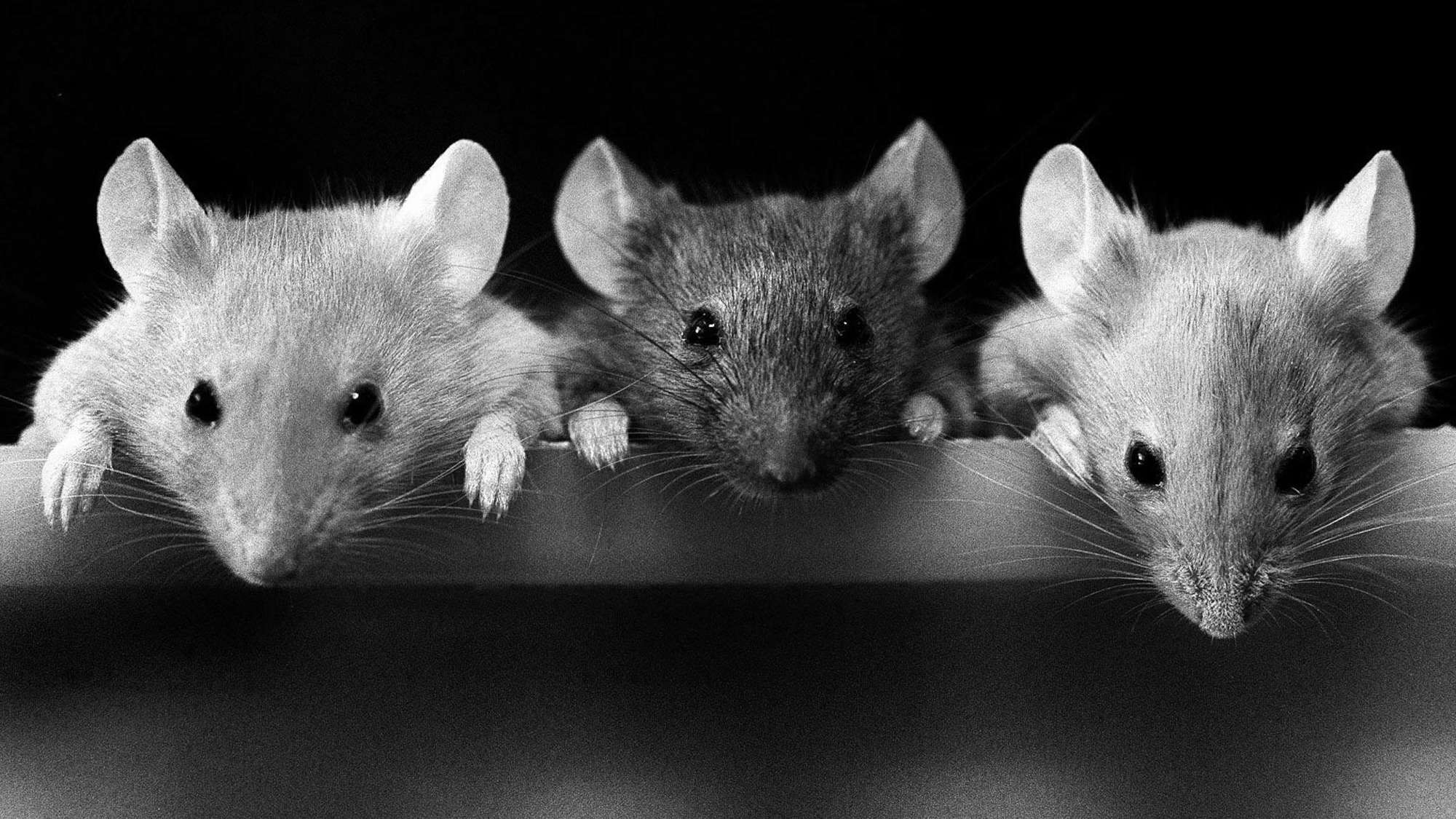
Whether any of it will work to prevent the next outbreak remains a nagging uncertainty — particularly in the Covid-era — that has placed heightened scrutiny on facilities conducting animal pathogenic research. But scientists like Barbara Han, a disease ecologist at the Cary Institute of Ecosystem Studies in Millbrook, New York, suggest that a diverse set of strategies involving multiple animal species and multiple computer models — and a willingness to share new information widely, despite the risks that might carry — are key steps.
What we tend to do with a lot of these pathogens, Han said, is “we wait for something to emerge, and then we figure out what carries it. So it’s like a reactionary approach.”
“Wouldn’t it be great,” she added, “if we could predict which animals, and then manage those better, so that we don’t have to wait for spillover?”
Animals carry an array of viruses, and one challenge for pandemic researchers is figuring out which ones might pose a potential threat to humans. “We don’t want to go throw a virus in 200 bats in a lab setting and see what it does,” said Colin Carlson, a biologist at Georgetown University. “We would like shortcuts to that information.”
Toward that end, Carlson and other scientists are using predictive modeling and artificial intelligence to pinpoint specific genes in specific types of bats that could make the viruses they carry more or less likely to cross over. Their models include things like bat wingspan, diet, longevity, and much more. “The logic is that these traits are operating as a suite,” Han said. A bat could carry a virus that is deadly to humans, but if it only lives for six months in a habitat far from people, eating a fruit that no other bats eat, the suite of traits overall makes a spillover unlikely.
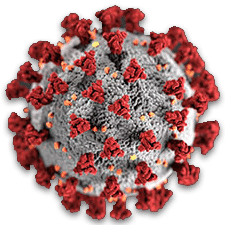 |
For all of Undark’s coverage of the global Covid-19 pandemic, please visit our extensive coronavirus archive. |
In a 2022 paper, Han, Carlson, and their colleagues, along with ecologist Daniel Becker at the University of Oklahoma, created a group of eight models to identify which species of bat might carry certain coronaviruses that are similar to SARS-CoV-2, the virus that causes Covid-19. For more than a year afterward, they tracked the discovery of new bat species carrying the viruses and compared these discoveries to their model. Their model successfully predicted 47 of the new bat hosts in the initial study, and since then, the team reports having accurately predicted more than 400 bat hosts. Han has also applied similar methods to rodents, identifying different areas around the world where the animals might end up with a disease that could infect humans.
In an earlier paper, Han and her coauthors used modeling to determine what other mammal species have the potential to become infected by SARS-CoV-2. One that popped out was the white-tailed deer. “I guess I was surprised,” she said. “Well, I mean, I wasn’t surprised because the model told me not to be surprised.” Soon, reports began coming out — white-tailed deer were infected with SARS-CoV-2 in huge numbers.
Unfortunately, Carlson said, “most of the time, this workflow stops at scientists sounding the alarm.” What’s needed, Carlson said, is for other scientists to take that data and use it to go out into the field, find more bats and more rodents, and test them for diseases.
This is a problem Becker is working to solve. Using the results of the models, he hopes to find “the things we haven’t sampled yet.” Right now, “there definitely is a rich-get-richer effect in the literature,” he noted. “Species that are better studied typically have a higher number of pathogens associated with them.”
That doesn’t mean those bats harbor more viruses or are any more dangerous. It merely means they’re being sampled more. The trick, Becker said, is to continue long-term studies of bats scientists know about while conducting surveys of new bats that might harbor new viruses. That knowledge could in turn go back and improve the models.
Still, most labs aren’t finding new viruses so much as they are learning more about those that are already known to exist. In Tony Schountz’s animal colony at Colorado State University, the walls are hung with pale swaths of fabric usually used for landscaping, its little holes just large enough for tiny bat toes. Metal hooks also adorn the walls, spiking apples, melons, and bananas — the animals in here go through an entire truckload of produce in a week or less.
When the scientists need to get an animal, they put on heavy leather gloves, reach up, and gently grab a bat.
These are Jamaican fruit bats, or Artibeus jamaicensis. “They don’t like you grabbing them, but they’re very manageable,” Schountz said. His lab studies bat immune systems, trying to figure out how the animals live with viruses without suffering from disease, and how those viruses then end up causing disease in humans. “We obtained our bats from a zoo, and that was 16 years ago,” he said. “We started with about 60 of them, and we’ve kept them going.”
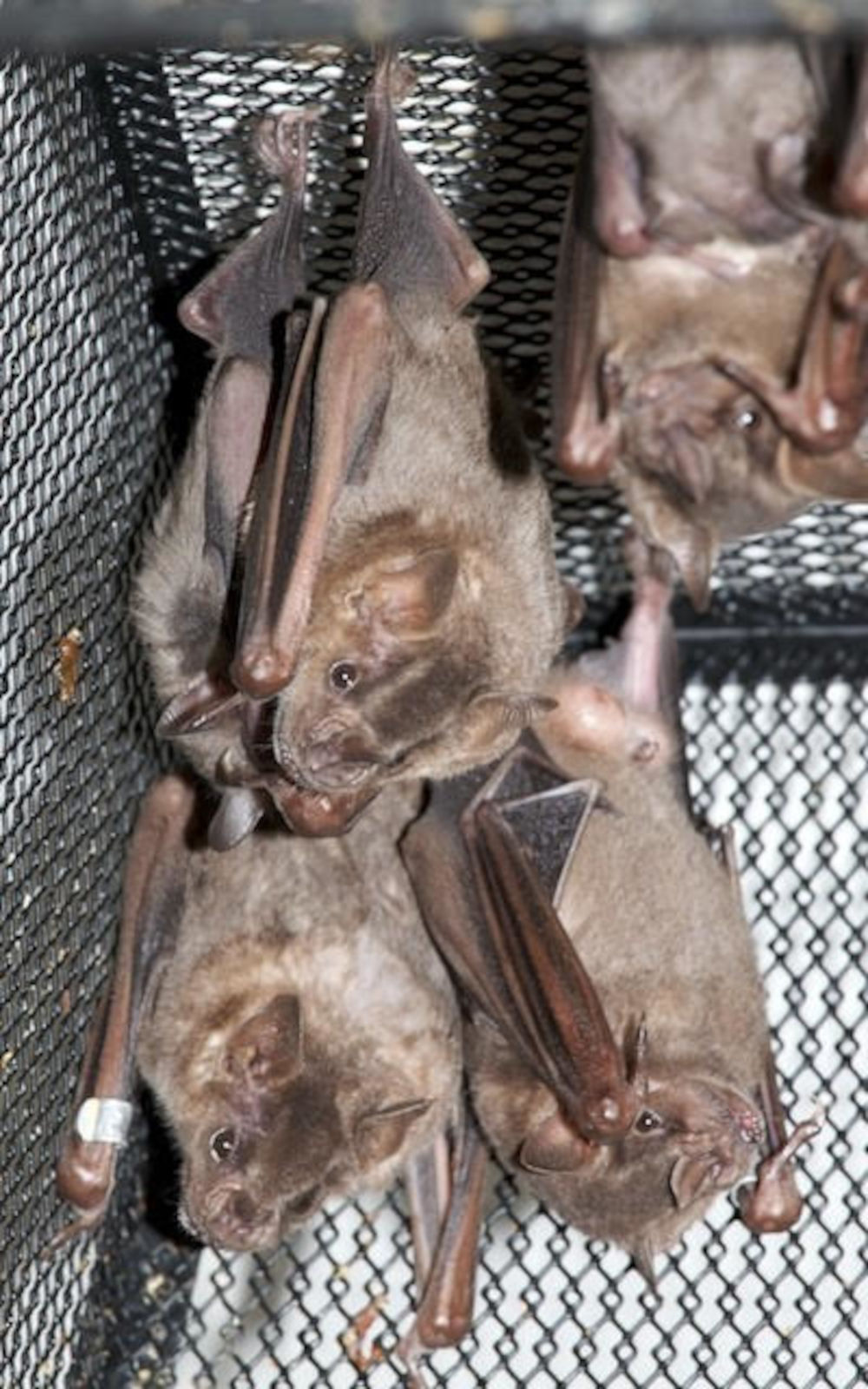
Tony Schountz has been breeding Jamaican fruit bats in a laboratory colony for 16 years. While the pace of research is slower than in a mouse lab, Schountz would like to see the bat become a common model organism.
Visual: Colorado State University
Schountz would like to see the bat become a more common model organism, but before this can happen, he said, scientists will “need to have the right tools in place.” If scientists want to run a test for a protein in a mouse’s immune system, kits for the most common proteins can be ordered online. For the Jamaican fruit bats, though, everything has to be developed from scratch. “And of course, if you start with a different species of bat, you have to start over.”
In Schountz’s bat colony, the pace of research is slower than in a mouse lab. Mice can reliably produce large litters of up to 12 pups after three weeks of gestation, while bats only have one to two pups per year. Many bat genomes are not fully understood, and so their genes are not as easily tweaked. Fruit is expensive.
Schountz’s colony is amazing, said Becker, but other bats also harbor different viruses, and Becker works on vampire bats in Central America. Some scientists do keep captive colonies of them, he said, but “it is a non-trivial amount of work – imagine maintaining blood stocks for a few of those bats, constantly.”
“We started working on migratory insect-eating bats,” he added, “but again, the logistics of keeping insectivorous bats in captivity — it’s also really tricky because you have to have a lot of mealworms.”
Scientists are also interested in domestic animals like cows, chickens, and pigs, which are often kept in close confines and stressed conditions where viruses easily thrive. Tara Smith, an epidemiologist at Kent State University in Ohio, makes it her research goal to monitor livestock for bacteria and viruses.
In some ways, it’s easier. The microbes Smith is hunting for are well known — bacteria such as Staphylococcus aureus and its various antibiotic-resistant strains. In other ways, her approach is far more challenging. “The pigs are not happy,” she said. “We usually have to have help from the farmer to hold them,” she continued, because the pigs are 400 to 600 pounds, “and you’re trying to stick a swab up their nose, and they do not enjoy it.”
Some surveys can be done with saliva, which is easier. Give a pig a rope, and they will chew on it, just like a dog would. Fecal samples are equally simple — so long as one is not particular about which pigs’ feces are collected.
Farm animals can also incubate new strains of disease. In the worst case, farmers may need to cull every animal on their property to stop the spread. And researchers wishing to study the new viruses must do so in a controlled environment, where there’s little risk to people’s chicken breasts and bacon.
Some of these new viruses have been taken to the Biosecurity Research Institute at Kansas State University. There, scientists such as Juergen Richt, a veterinary microbiologist, study diseases in large animals — from cows and pigs to white-tailed deer.
Pigs and deer can be used for laboratory studies, but they, like bats, aren’t a great lab model yet. Just like with bats, there are few immunological kits available for large mammals. “What has been done in mice could be done theoretically with pigs,” said Dana Vanlandingham, director of the facility’s arthropod rearing and containment. “But it would be an enormous undertaking, and extremely expensive.” And scaling up experiments from lots of mice to lots of pigs just isn’t possible, she added. “Pigs just take up too much room.”
It can also be difficult to find virus-free pigs, said Richt, because the animals are exposed to so many barnyard pathogens. (It would also be hard to find a virus-free human.) But virus-free pigs are necessary to try to isolate the effects of the disease the scientist needs to study from other diseases it might have. During the H1N1 pandemic nearly 15 years ago, Richt had to search to find just 15 virus-free sows, which he then isolated in a barn, and used only their offspring in his experiments.
No one of these methods — mouse models, computer predictions, bats, or livestock — will be able to predict and prevent the next pandemic on its own, researchers say.
Han envisions a world where artificial intelligence could highlight which sequences in which viruses might pose a threat to humans. Those sequences could then be tested in cells from bats and rodents, as scientists hunt for the viruses in the wild. In the meantime, sequences could be fed back into models, to find out if livestock might be at risk. And mouse researchers could get to work making mouse models to develop vaccines. Along the way, scientists could work together to assess the risks and benefits of sharing the scientific information they uncover with the wider world.
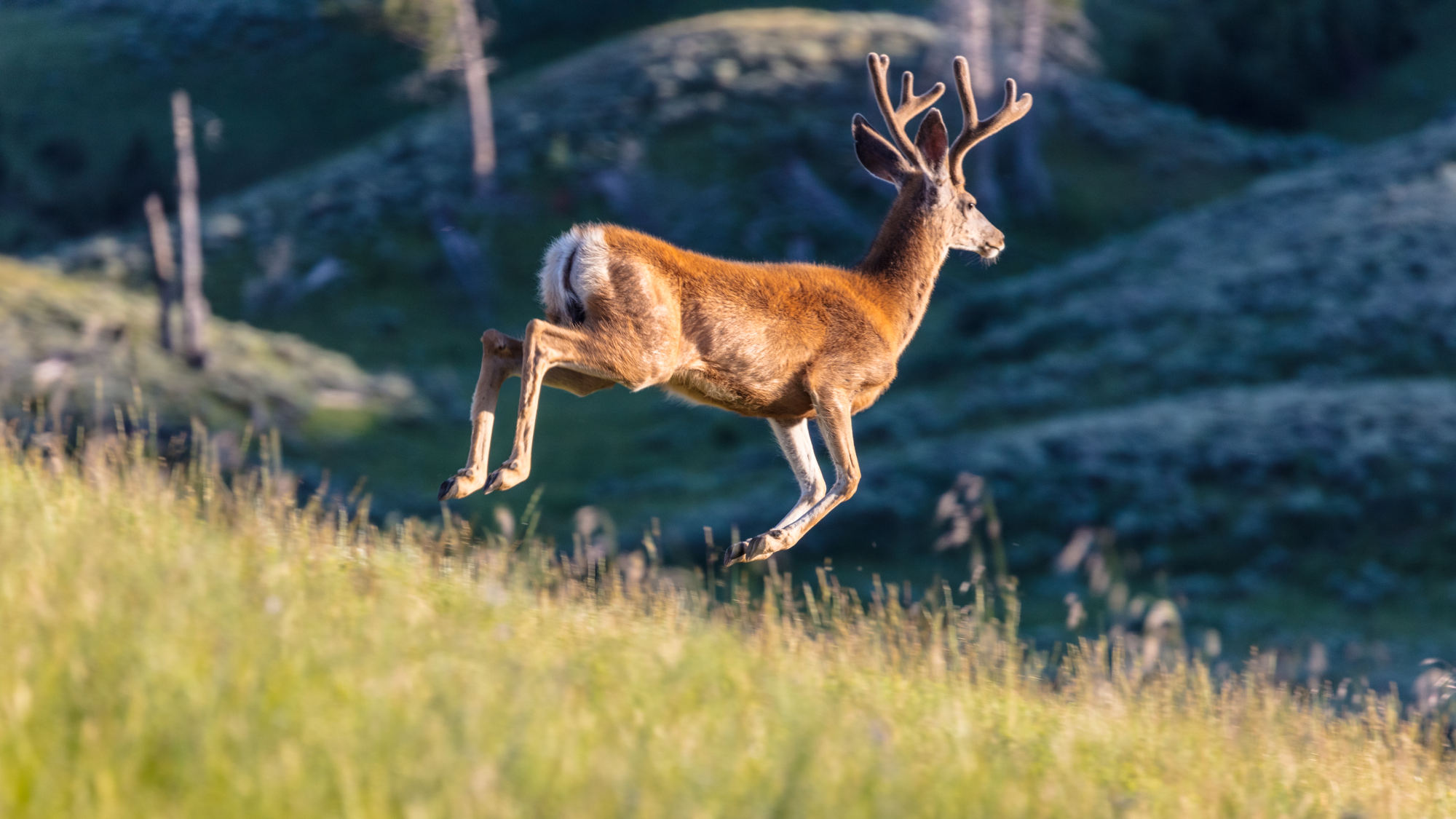
Sharing this sort of information, of course, carries special considerations. The discovery alone of a new, potentially harmful virus carries some risk, said Ryan Ritterson, a synthetic biologist turned consultant at Gryphon Scientific. Particularly when the finding is published in a scientific journal, it can then be accessed by people who want “to spread a virus or create a virus with harmful properties.”
The worry isn’t academic. In 2011, virologist Ron Fouchier released the results of an experiment with the deadly H5N1 virus. The virus is normally only able to spread to humans who handle infected poultry, but Fouchier used a laboratory technique that modified the virus so that it could spread through the air and infect ferrets, which are often used to study respiratory viruses.
Although the modified virus was less lethal than the original, fears still abounded that it might leap from a lab and infect humans. And there was an additional concern: that the data itself should not have been published by Fouchier or by a separate group that achieved similar results around the same time. The fear was “if we tell the whole world what the genetic sequence of this virus is,” said Ritterson, “could a malicious actor simply make that virus and then release it?”
But this risk needed to be balanced with the huge benefit of sharing knowledge, Ritterson continued. When the publications came out, the National Science Advisory Board for Biosecurity, which is a panel of experts that advises the Department of Health and Human Services, conducted a review of the work. They “concluded essentially that the information risks of publication were outweighed by the public health benefit of spreading the information” to other scientists and public health practitioners, Ritterson said. It’s a complex weighing of risks and benefits, in which the magnitude of each risk and each benefit is nebulous and often subjective.
Ritterson can’t see a time when publishing would be out of the question. If a virus can be easily endowed with pandemic potential in a laboratory, he said, then that virus can likely evolve to a similar state in nature, too. In either instance, there’s a risk of a bad actor using that virus for nefarious ends. The benefits of foreknowledge, he added, will nearly always outweigh the risk.
But because there is a risk, Ritterson told Undark, collaboration between people who study risk assessment, like himself, and those hunting for the potentially worrisome viruses lurking in bats, pigs, cows, deer, and elsewhere in the animal world, should happen early and often.
“I bet that both sides would probably come away feeling they had learned a lot,” he said. If the collaboration produces changes in experiments or publishing, “that could probably mitigate, you know, not all of the information risks, but some or most of the information risk while letting the benefits carry forward.”
Bethany Brookshire is a freelance science journalist and the author of the book “Pests: How Humans Create Animal Villains.” Her writing has appeared in Scientific American, Science News magazine, The Atlantic, the Washington Post, and other outlets.










